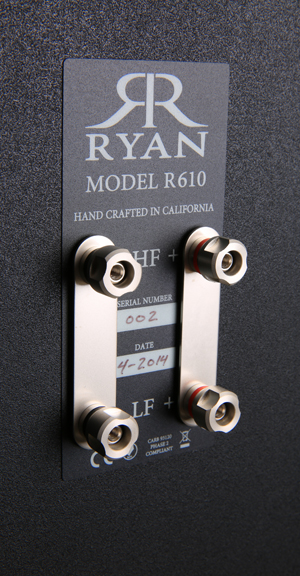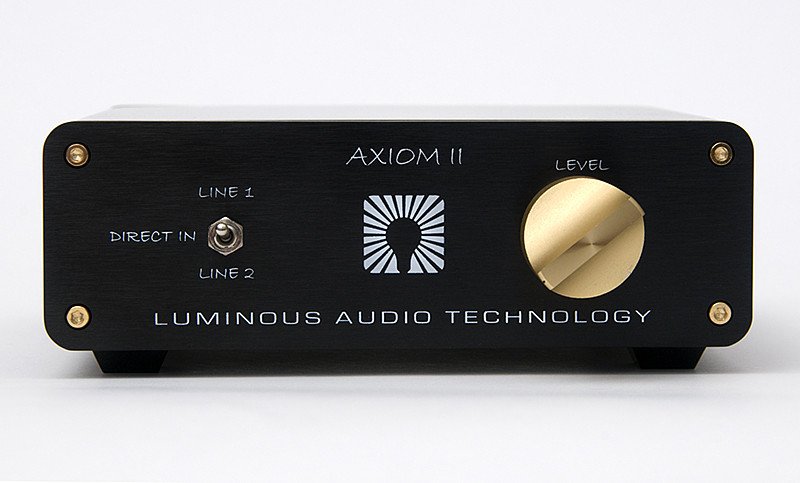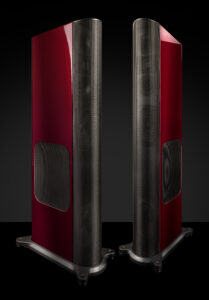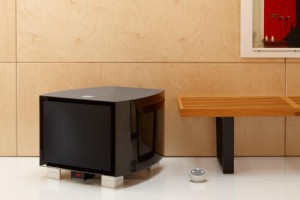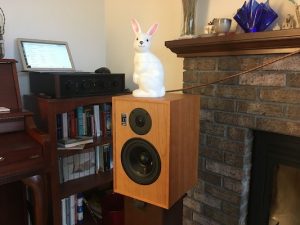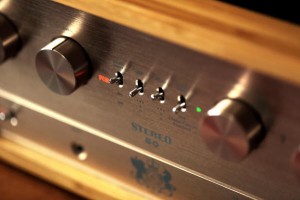Call me old-fashioned, but I have always preferred a good two-way.
There is something comforting, but not necessarily boring or same-old-same-old as a solid pair of two-way loudspeakers.
The promise of something "extra special" from a pair of three-way or even four-way (where would one even get the strength) loudspeakers, has often been a huge letdown because who needs the extra drivers or such a large box in the living room or bedroom system? At this point in life, who wants to commit to something so complicated or with the potential for morning-after guilt?
Having lived with my fair share of exotic large panel electrostatic, and planar-magnetic loudspeakers over the past twenty years, I suffer from no form of panel envy. Been there. Literally slept between them. Not interested in going there ever again.
Parenthood has also had a dramatic impact on life and one's priorities. Audio can't dominate any of the main living spaces in our home anymore (glares at the three year-old with impressive dexterity and curious nature of Jake/Finn), so my version of exotic audio in 2016 would have to begin and end with something akin to the Spatial Audio M3/M4s; primarily due to their size/shape and the ability to slide them into a corner when not in use.
Money is also a factor for most people and even more so for music lovers paying for three children in private school; not bitching about it but it has had a significant impact on the types of audio products that I look at now versus the products that I used to buy when I was only responsible for myself, some form of rental, and a diet of pho and veal sandwiches.
Snooping on early morning conversations at our local coffee hut, I have discovered that I'm not alone in that regard.
Growing up is hard to do…
The relationship with your stereo is complicated. It often takes over your life in an unhealthy way. Audiophiles often make emotional decisions that prove to be very costly. Sitting home alone in the dark and vociferating about how that "big" change proved to be a huge step backwards; often leading to some mad dash to the computer to lash out at the reviewer who told you how great it would be—is a sign that you may need to take up fly fishing or actually venture outside to meet humans.
But I digress…
For almost a decade, a pair of Spendor SP2/3e two-way loudspeakers were my daily driver and like many things in life, I regret selling them. They were faithful to the final moments when I packed them up and shipped them off to their new owner. I suspect that they have given them as much listening pleasure as they gave me. Before being boxed up again to be sold to someone else. Bastard.
They didn't kvetch on 9/11 when I sat in-front of them in utter silence. Thinking about how the events of the day had affected my immediate family in NYC, friends in the military, and would impact on my forthcoming wedding in Florida that would require hundreds of scared friends/family to fly. I didn't turn on my system for days because music was the last thing on my mind. When I eventually did return to them, they were a source of comfort; distraction is probably a better word for it but they helped push me back into the light.
Fast forward ahead almost fifteen years—marriage, Manny's in Chicago, Jazz Record Mart, divorce, Intifada, new marriage, birth, birth, nervous breakdown, recession, birth, Bat Mitzvah, poverty, private school tuition for three, liver disease, war, famine, Trump, Hillary, and those horrible Ghostbusters and Lethal Weapon retreads.
Why would anyone want to lose themselves in music?
Not a clue.
Making Music Great Again
The Ryan Speakers R610s found their way into my listening room through the generosity of my good friend, Ron Brenay, head honcho at NewRecordDay. Ron and I speak a lot and he has known for the longest time about my fixation for two-way stand-mounted (should have mentioned that earlier) loudspeakers that would earn the approval of Toshiro Mifune.
The R610s are boxy. Chunky like a proper two-way stand-mounted loudspeaker should be.
At 16.73"H x 8.86" W x 12.1" D, the R610s are considerably larger than most two-ways in the category and fairly heavy at 33 pounds a piece. Use both hands when placing on your speaker stands.
The unusual height of the loudspeakers did make me try different types of set-ups because my 24" single-post GHA steel stands put the tweeter quite high (even for a 6'3" listener such as myself) in relation to my listening position. I experimented with the R610s on a media console with a height of 21" and turned sideways inside a wall unit where the tweeter was 45" high.
Regardless of how you set them up, ensure that the stand or base that they sit on is quite inert. The cabinet is very solid and you'll only hear more into the music with a better foundation beneath them.
The R610s need at least two feet from the wall behind them. I would also heed the advice of Todd Ryan and place them at least 7' apart and then angle them in towards your head. I'm not obsessed with the width/depth of the soundstage, but the R610s reproduce it well with proper placement.
Stick them in a line-up with some more exotic two-way loudspeakers such as the KEF LS50, Dynaudio Excite x14, or Sonus Faber Venere 2.0, and you're unlikely to be seduced by them based on appearance alone. The proof with these two-way monitors with a penchant for fried chicken and Korean BBQ is in the listening; their $2000 MSRP is decidedly low based on what they can do.
More expensive loudspeakers that have graced my home over the years have not delivered on the same level as the R610s. I would consider the R610s to be endgame loudspeakers for 99% of listeners based on their price/performance; even those who would still consider $2000 to be an affordable lifestyle expenditure.
The driver compliment on the R610s consists of a single 6.5" laminated nomex cone woofer, and a 1" cloth-domed tweeter. The tweeter is surrounded by a felt ring to minimize early reflections.
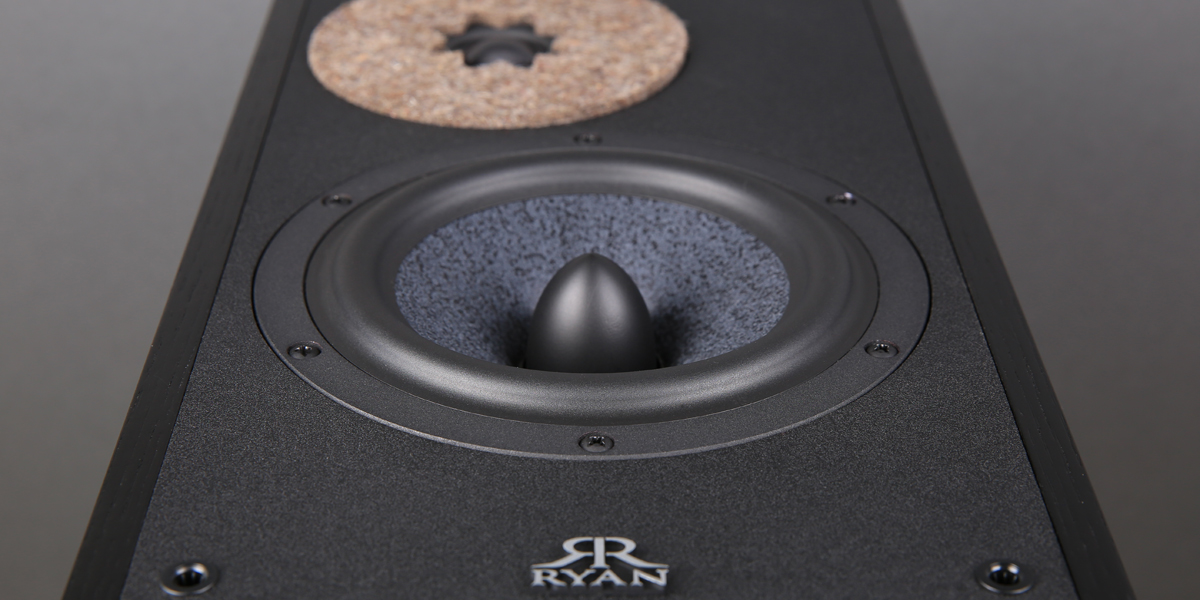
The enclosure is also rear-ported and that did require some attention when positioning the R610s in each of the three rooms that I used them in.
From a power perspective, Todd Ryan recommends 50-100 watts/channel, but I got away with a lot less. 6 watts of single-ended tube power to be exact. During my extended period with them, I drove the R610s with the AmpsandSound Bigger Ben (6 watts, 6550 tubes), Rega Brio-R (50 watts, solid-state), and Croft Phono Integrated (45 watts, Hybrid).
At 86dB, with a nominal 8-ohm impedance, the R610s are a friendly load.
The AmpsandSound Bigger Ben sounded wonderful with the loudspeakers but they did run out of gas when I pushed the volume levels much higher. If you don't require really loud listening levels and your room is on the smaller side, the combination could work really well for you.
The Brio-R had zero issues driving the R610s and the extra bit of warmth that it provided was a synergistic match.
The Croft, however, was the best of the bunch and not by a small margin. While not as warm in the midrange as the other two amplifiers, it delivered superior resolution, better pacing, and just breathed more life into recordings than the other two very capable products.
British hi-fi components have always been a constant in my life, and while the R610s are as American as a double-double with hand-cut fries and Boylan's Creamy Red Birch Beer, they have the soul of a pair of Spendor/Harbeth/Wharfedales and that makes them a great starting point for anyone interested in a pair of loudspeakers that will satisfy for the long haul.
Unlike their British cousins, however, the R610s do not paint an overtly pretty picture of everything that you feed them; they are certainly less kind to poor recordings and while that may seem like a turnoff for some, they are unabashedly honest when it comes to their overall presentation.
The top end, as I discovered punishing the R610s with countless hours of music streamed via TIDAL, is certainly lit up compared to something like my aforementioned Spendor SP2/3s, or the Wharfedale Diamond 10.1s, and Diamond 225s that keep me engrossed in the bedroom and living room on a daily basis.
More recent incarnations of the SP2/3s and comparable two-way designs from Harbeth are certainly more detailed sounding than earlier models, but the R610s still present musical detail with greater clarity and more bite.
Where the R610s put some daylight between themselves and their rivals is in the lower registers and their ability to handle a wider variety of music at levels that make them more versatile over the long haul.
It would be fair to call the bass response of my older SP2/3s as "wooly," or "meaty but falling off the bones."
The R610s are a completely different animal; bass is tight, controlled, and depending on how you position them and the grunt of your amplifier, impressively punchy and engaging with all types of music.
Do they need a subwoofer?
Maybe.
Depends on the size of your room and what you enjoy listening to.
I did dust off my much older REL T5 subwoofer that has not seen any service for over a year (poor fella…sitting in the corner of my office as a stand for my overflow of bobbleheads) and put it into action for a short period in my 16 x 13 den.
The R610/T5 combination worked really well; especially with electronic music, but that raises a prickly issue. Why not buy the larger R620s or R630s instead? I have had the opportunity to listen to both at trade shows and they do offer deeper bass response, and in the case of the R630s, a smoother sounding midrange.
I could easily live with the R610s without a subwoofer. I suspect that is true for most people.
But what about the midrange?
I have intentionally left that for last because it took some time for me to accept that the R610s are more neutral sounding than my beloved Spendor or Wharfedale monitors. I wanted them to be overly warm and lush, but they are not.
They recreate the human voice in a way that can best be described as "spooky" with the right amplifier and without sacrificing any top end detail or lower end prowess. The better the recording, the more immersed you will become. Warts will show up, however, so don't hate the R610s for communicating the truth.
The R610s are not analytical sounding either, but I did prefer them with tubes or the hybrid configuration of the Croft. Should you decide to drive the R610s with solid-state amplification, match it up with a DAC or phono set-up that leans towards the dark side. The top end is very detailed and airy, so the same bit of advice stands.
Schiit Audio DACs? Good match. Chord 2Qute as well. I liked the second generation AudioQuest Dragonfly USB DAC more than the Dragonfly Red.
The Croft has a fantastic MM phono stage and the R610s matched up well with all three of my cartridges; Dynavector 10x5, Ortofon 2M Black, and Nagaoka MP-200. Grado wood body cartridges would be a safe bet as well.
For most people, spending $2000 on a pair of loudspeakers is a huge investment. Building a system around a pair of loudspeakers such as the Ryan R610s will not be an inexpensive endeavor, but a journey well worth taking.
Could you build a genuine high-end system around these two-way loudspeakers for under $5000 and be done? Absolutely.
I know I am.
Highest possible recommendation.
Specifications
- Description: 2-Way Bookshelf Loudspeaker
- Tweeter: 1” (25mm) Chambered Cloth Dome Tweeter
- Woofer: 6.5” (165mm) Laminated Nomex Cone, Die cast frame
- Crossover: 2000Hz
- Frequency Range: 44Hz – 25kHz +/-3dB
- Sensitivity: 86dB (2.83V@1m)
- Impedance: 8 Ohms Nominal
- Amplifier Power: 50-150 watts
- Enclosure: Bass-reflex via rear-firing port
- Inputs: Bi Wire - 5 Way binding posts
- Height: 16.73" (425mm)
- Width: 8.86" (225mm)
- Depth: 12.01" (305mm) with grille
- Weight Each: 33lbs (15kg) Shipping Weight
R610 Loudspeakers
Retail: $2000 a pair
Ryan Speakers





